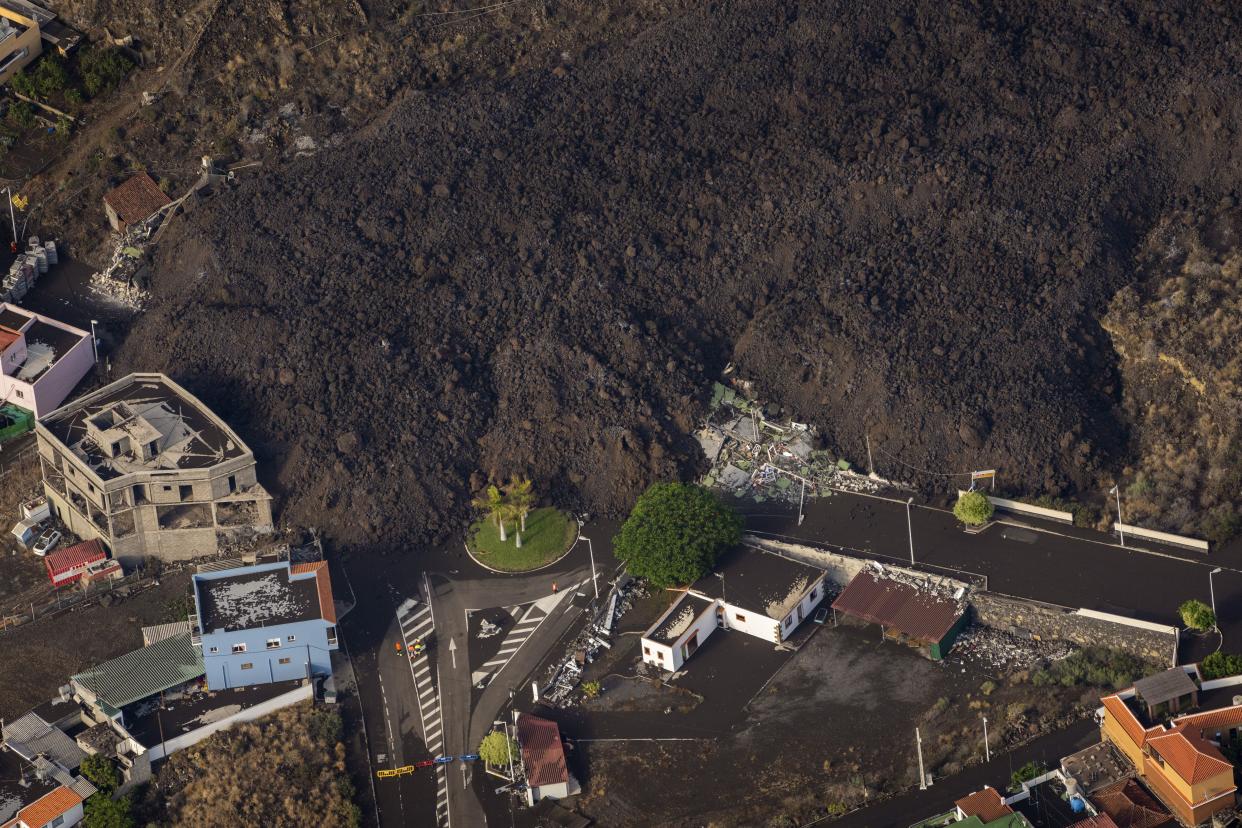Lava stream from Canary Islands volcano slows down, thickens as residents fear more destruction
The giant river of lava moving through one of Spain’s Canary Islands following a massive volcanic eruption on Sunday has thickened and slowed significantly, raising fears that it might cause further destruction for days to come.
The largest stream of lava, which is about 2,000 feet wide, is now moving on the island of La Palma at a speed of about 13 feet per hour — compared to 2,300 feet per hour just days ago, officials said. A second stream of lava, meanwhile, has essentially ground to a halt, according to the National Geographic Institute in the Canary Islands.

The molten rock, whose temperature is over 1,800 degrees Fahrenheit, was initially expected to reach the Atlantic Ocean this week, but some scientists have since changed their prediction, saying it might never get to the sea.
Volcanologist Stavros Meletlidis said the dynamics of any volcanic eruption is usually in constant flux.
“The lava is advancing very slowly because it cools in contact with the atmosphere, through friction with the ground and building materials and, above all, because its front edge is widening out,” he told Radio Televisión Canaria.
Lava was still being thrown out of the volcano Thursday, but at a lower volume than earlier in the week, said María José Blanco, head of the geographic institute. So far, about 26 million cubic meters of lava have spilled into La Palma, which is home to some 85,000 people. Scientists believe the lava stream could continue for weeks or even months.

The eruption has destroyed about 350 homes and some plantations on the western side of the island, threatening the lives and jobs of numerous families.
“We are waiting to see if we can go out to work or not. This changed our life,” said Joel Francisco, who works on a banana plantation and had to evacuate his home Sunday.
“We don’t know how long we have to wait until we can return to our homes because the roads are closed,” he told The Associated Press. “Some people have it worse off, their houses are gone.”
Spain’s King Felipe VI on Thursday visited the island with Queen Letizia and Prime Minister Pedro Sánchez to assess the damage and speak with those affected by the disaster.

“Suddenly, you have had almost everything taken from you, in one fell swoop. No home, no equipment, no clothes, no food, no resources, no work,” the king told reporters as he vowed to help those families.
No deaths have been reported so far.
The last time La Palma had a volcanic eruption was in 1971.
With News Wire Services
